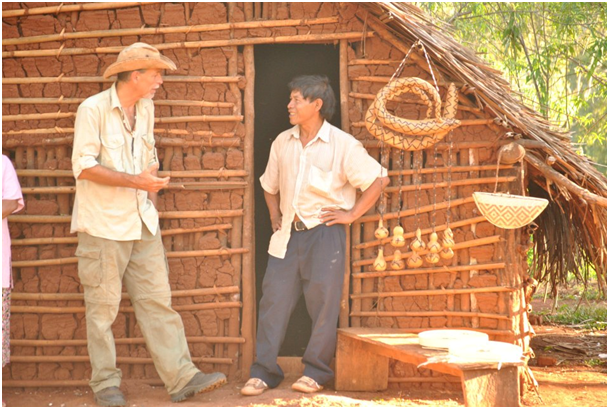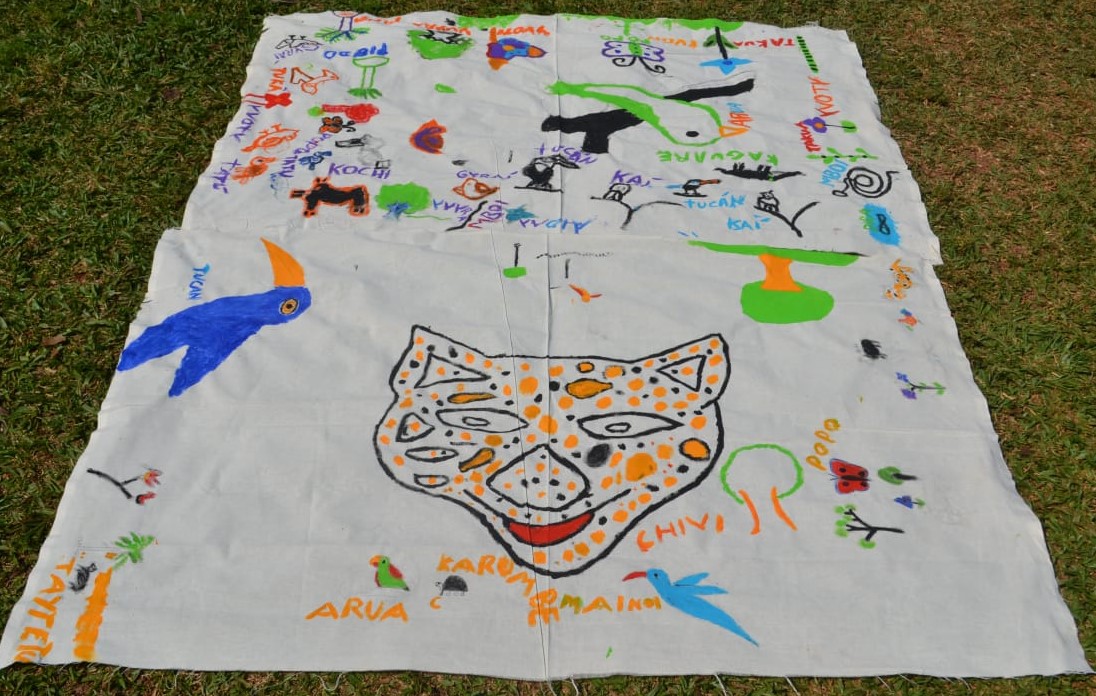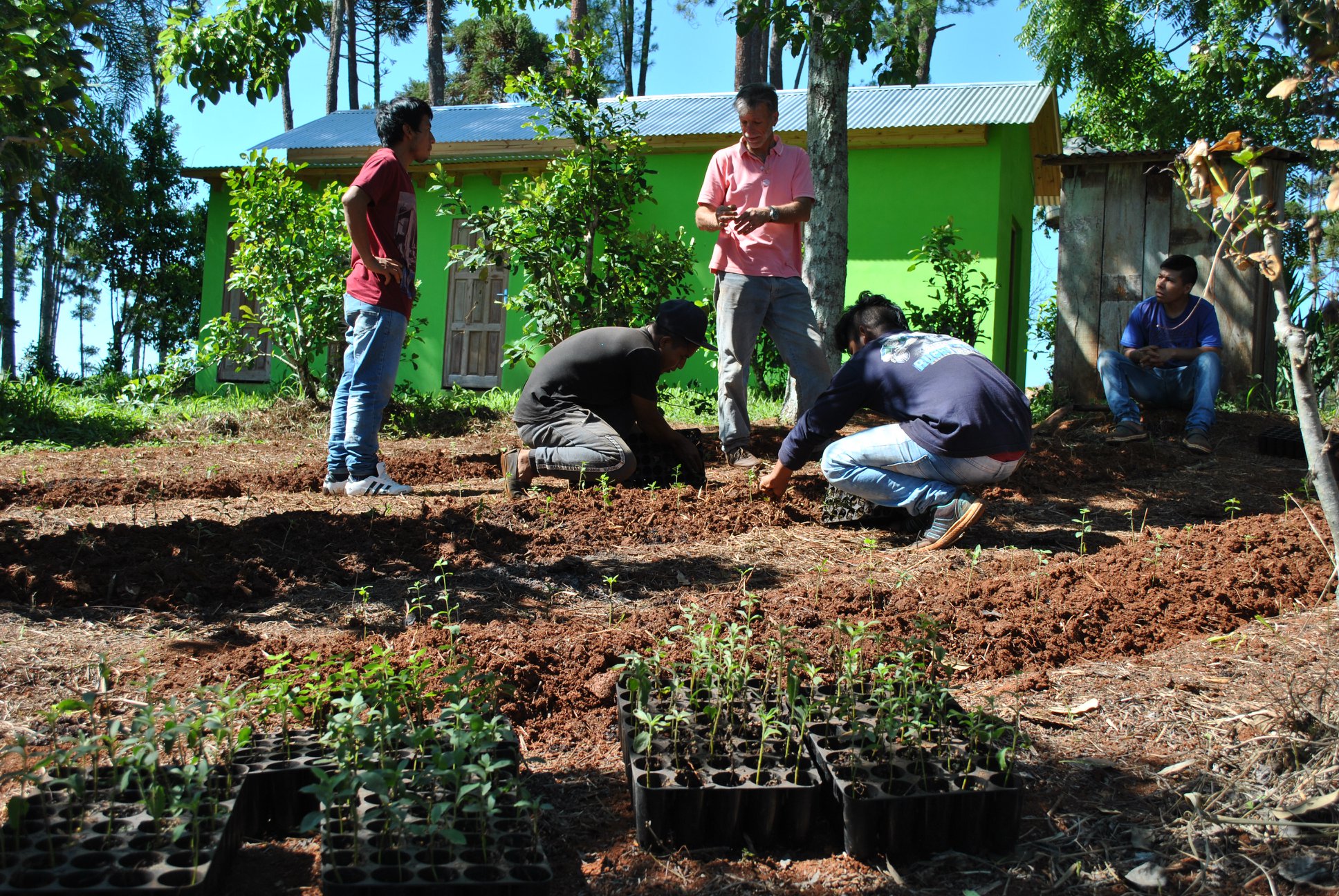Conservation Project
Systemic Conservation Project & Private Reserve
El Soberbio Municipality, Misiones Province, Argentina
-27.040575769, -54.136141666




In 2004, Carlos Persini and Veronica San Martin accquired 52 ha of land in the middle of the jungle and started the Reserva de Selva, Refugio y Estación Biológica Aponapó (Aponapó Biological Station, Refuge and Jungle Reserve). It is a Private Nature Reserve under the administration of the Fundación Huellas para un Futuro, and recognized by the National University of Misiones, Faculty of Forestry Sciences as well as a member of the Network of Private Nature Reserves of Argentina.
In 2011, Carlos and Veronica created Fundación Huellas para un Futuro and ceded the Reserve Aponapó to this foundation. The Foundation is determined to address the socio-environmental problems within an area of 200 km2 (19,000 ha) in the province of Misiones, Argentina - under the umbrella of a project called Kaa'guy Porá (An Integrated Community, A Sacred Reserve). The project focus region belongs to the buffer zone of the Yabotí Biosphere Reserve, where people of diverse origins coexist (Brazilian, German, Ukrainian, local) and four Mbya Guaraní communities.
Started in 2012, the project is developed in phases over a 10-year period. Holistically, it addresses socio-environmental variables and articulates synergistic actions between adaptation-mitigation of climate change, managing to work on 14 of the 17 objectives of sustainable development.
The comprehensive KP project has been characterized by a systemic and integrated approach to socio-environmental and economic variables that has allowed the program to adopt a natural trend and consolidate itself as a foreseeable consequence through community consensus.
Based on 2 main axes: “Human Development” and “Environmental Conservation”, four horizontal programs and one transversal to them are articulated:
- Rural community tourism
- Sustainable agricultural production
- Payments for environmental services
- Institute Huellas para un Futuro- Aponapó Biological Station, Refuge and Jungle Reserve
- Environmental restoration
The development of these components influence and train the community in aspects of:
- Food safety
- Adaptation and mitigation to climate change
- Planning on land use, transition to sustainable practices and eradication of the use of agrochemicals
- Promotion and Marketing of production without intermediaries
- Association and cooperativism
- Education, training and insertion within the formal system
- Rights and safeguards
- Restoration and enhancement of ecosystem services
- Social empowerment for the control, diagnosis, conservation of the environment and its biodiversity
Conservation & Community Highlights:
- Implementation of the National Plan for the Restoration of Native Forests
- REDD+ project for civil societies and local communities in Latin America and the Caribbean
- Adhesion and involvement in the United Nations Global Compact
- Implementation of the Nagoya Protocol (Convention on Biological Diversity)
- Joint project with ACICAFOC in the development of a technological platform for the homologation and systematization of surveys in Central America (Belize, Costa Rica, El Salvador, Guatemala, Honduras and Panama) for the programs Indigenous and Peasant Agrobiodiversity in Central America (PAICC) and Program for the Integrated Management of Natural Resources (PMRN)
Future Aims:
- Development of a sustainable system of payments for ecosystem services involving the private sector
- Continue with REDD+ for the benefit of vulnerable communities
- Deepen the commercialization by opening export channels for the YEVIA product, based on the cultivation of stevia, and dissemination as a sustainable production model with triple impact
- Continue deepening the joint implementation of projects in Central and Latin America related to natural resource management, payment for ecosystem services and socio-environmental and economic monitoring platforms
- Position as a benchmark in the implementation of the Nagoya Protocol in the use of genetic resources and equitable distribution of benefits in vulnerable populations